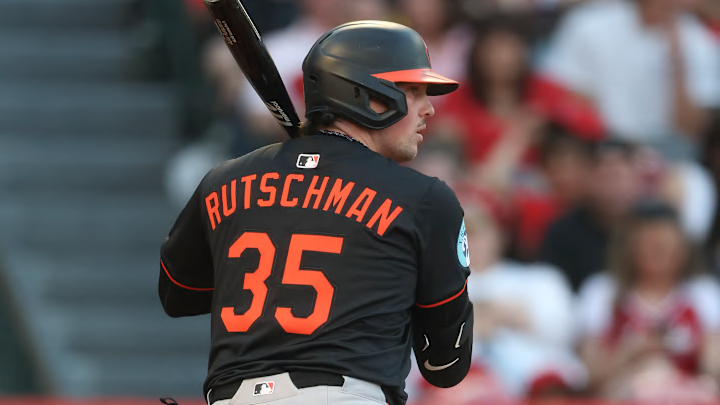Baseball is guilty of information overload. Venturing over to any player’s Statcast page, you’ll find any number of potential rabbit holes to shimmy down. Navigating through the right twists and turns, however, can lead you to some incredibly in-depth answers to your most pressing questions.
Among those questions about the 2025 Baltimore Orioles, perhaps, is why some of the O’s best hitters haven’t been producing their typical numbers. Some new Statcast metrics may help provide some answers.
This week, Statcast launched a bevy of new metrics, measuring a hitter’s swing path, attack angle, ideal attack angle rate, and attack direction. All tell you essentially everything you could ever want to know about a hitter’s swing.
One stat in particular, ideal attack angle rate, could reveal an area in which the Orioles might benefit from improving.
A shift in approach could lead to better offensive results for Orioles hitters
Let’s start with what “attack angle” is. Statcast defines it as “the vertical direction that the sweet spot of the bat is traveling at the moment of contact with the baseball.” An “ideal” attack angle, as they classify it, is any attack angle that falls between five and 20 degrees, which produces the most offensive value for a hitter.
It’s important to note that ranking down the list in this metric does not mean that you’re a “bad” hitter. Cleveland’s Steven Kwan, one of the most valuable players in baseball according to WAR, ranks second-to-last in ideal attack angle rate. The A’s Jacob Wilson, who is hitting .343, is sixth-worst. Both of these players provide a tremendous amount of offensive value. They don’t, however, hit for much power, have flatter swings, and thus don’t live within that range very often.
Shohei Ohtani ranks 72nd, Fernando Tatis Jr. ranks 79th, and Aaron Judge ranks 87th. It’s not a one-to-one indicator of a good hitter. But towards the top of the list, you’ll find great hitters like Corbin Carroll, Alex Bregman, and Juan Soto.
You’ll also find Cedric Mullins, who ranks 9th in baseball among the 224 qualified hitters in ideal attack angle rate. However, the next best Oriole is Gunnar Henderson at 116th. Adley Rutschman comes in at 117th, Heston Kjerstad at 157th, and Jackson Holliday at 159th. That’s a lot of hitters with power potential who could certainly benefit from living in that ideal attack range more often.
Again, there are exceptions to the rule. James Wood has the fourth-worst ideal attack angle rate in the game, and still has a dozen home runs. It’s easy to dream of what Wood could be doing if he didn’t hit the ball on the ground over 50 percent of the time, though.
There are plenty of stats and metrics to point to that indicate the Orioles need to get better offensively. Some better process in their attack angle to the baseball might be a good place to start.
